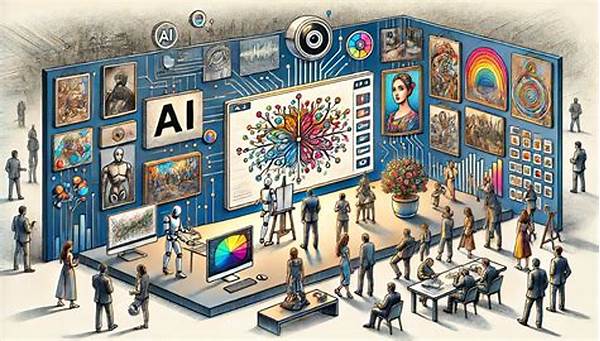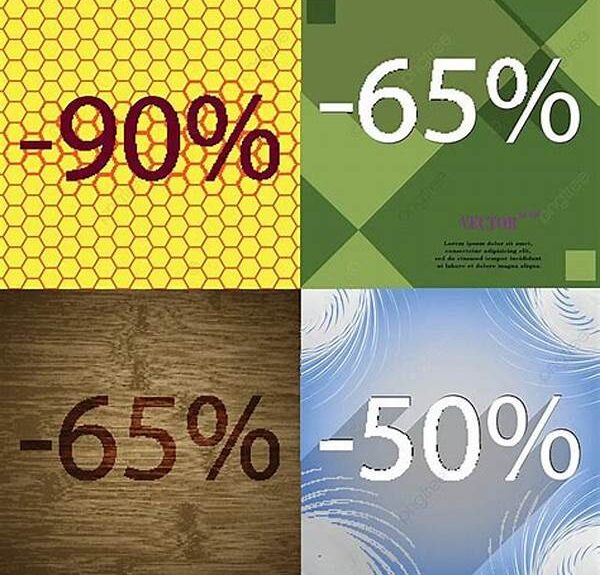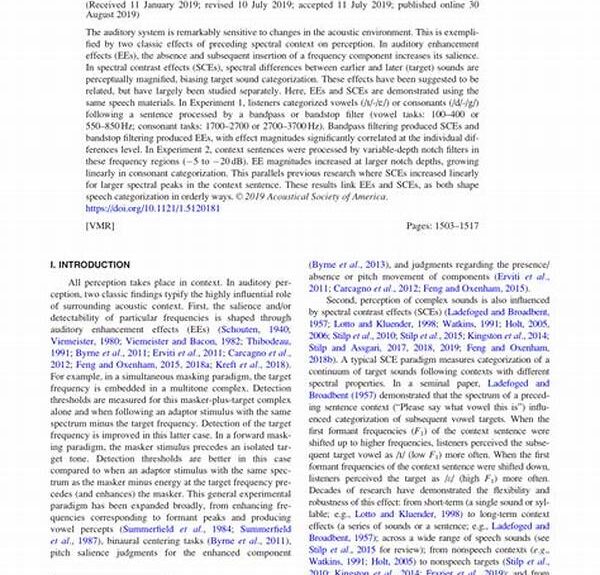In recent years, the art industry has undergone a massive transformation with the advent of digital technologies. This evolution has provided artists and collectors with new avenues to create, buy, and sell art. Central to this transformation is the concept of digital ownership, which has brought a new dimension to how art is perceived and valued. By leveraging blockchain technology and Non-Fungible Tokens (NFTs), digital ownership in the art industry has become a topic of keen interest, sparking discussions on both opportunities and challenges that accompany this technological shift.
Read Now : Establishing Cohesive Fictional Ecosystems
The Emergence of NFTs
Non-Fungible Tokens, or NFTs, have emerged as a revolutionary method for asserting digital ownership in the art industry. An NFT is a unique digital asset that represents ownership or proof of authenticity of a linked digital work. Artists and creators use NFTs to verify their digital assets, providing a solution to the long-standing problem of easily replicable digital content. Through blockchain technology, NFTs offer transparency and security, ensuring that ownership records remain immutable and accessible. This transformation has disrupted traditional models, inviting artists to explore innovative ways to monetize their work, and allowing collectors to acquire exclusive ownership rights to digital pieces, reshaping the traditional concept of art ownership as a whole.
Benefits of Digital Ownership in the Art Industry
1. Accessibility: Digital ownership in the art industry makes art accessible globally, eliminating geographical barriers and opening new markets.
2. Authenticity: Blockchain technology ensures authenticity and provenance of art pieces, preventing counterfeiting.
3. Monetization: Artists can directly monetize their work without intermediaries, receiving royalties from secondary sales through smart contracts.
4. New Revenue Streams: Creators explore new revenue opportunities through digital exhibitions and sales of virtual assets.
5. Community Building: Cultivation of communities around artists and collectors is fostered through digital ownership platforms, encouraging interaction and loyalty.
Challenges Facing Digital Ownership
Despite its notable advantages, digital ownership in the art industry is not without its challenges. The volatility of the NFT market, characterized by rapidly changing prices and values, adds layers of complexity for artists and collectors alike. Additionally, the environmental concerns associated with blockchain networks, especially those using energy-intensive consensus mechanisms, have stirred debates about sustainability. Concerns over digital art piracy and intellectual property rights also pose significant challenges, necessitating ongoing developments in legal frameworks to adequately protect digital creators. Addressing these challenges requires collaboration and innovation across industry stakeholders to ensure a sustainable and secure environment for digital ownership.
Technology’s Role in Digital Ownership
1. Blockchain Technology: At the core of digital ownership in the art industry is blockchain, which records ownership and transaction data immutably.
2. Smart Contracts: Allow creators to set conditions and automate transactions, enabling royalties and rights management.
3. Interoperability: Ensures digital assets can be utilized across different platforms and chains, increasing their value and utility.
4. Cryptographic Security: Protects digital assets from unauthorized access and replication, ensuring only rightful owners possess true digital ownership.
5. Decentralization: Offers a peer-to-peer network that eliminates the need for central authorities, fostering independence for artists and collectors alike.
6. Innovation Platforms: Hosts platforms that enable artists to exhibit, auction, and sell digital art, enhancing visibility and accessibility.
Read Now : Storytelling Techniques For Art Exhibitions Promotion
7. Digital Wallets: Securely store digital assets, providing artists and buyers a safe means to manage their collections.
8. Virtual Reality (VR): Enables immersive experiences by showcasing digital art in virtual galleries, enhancing viewer interaction.
9. Augmented Reality (AR): Integrates digital art into real-world environments, expanding exhibition opportunities and audience engagement.
10. Artificial Intelligence (AI): Assists in curating personalized art experiences and recommendations, enhancing the collector’s journey in digital art acquisition.
Impacts on Artists and Collectors
The introduction of digital ownership in the art industry ushers significant impacts for both artists and collectors. For artists, this technological advancement offers unprecedented direct access to global audiences, breaking down barriers inherent in traditional art markets. Artists are empowered to showcase their creations in digital galleries and sell directly to collectors, circumventing traditional intermediary channels. This new path not only democratizes art distribution but also ensures artists maintain a greater share of the profits. Furthermore, digital ownership models, particularly through NFTs, provide artists with perennial revenue through artist-resale provisions embedded in smart contracts. This ensures that creatives are compensated as the value of their work appreciates over time.
For collectors, digital ownership offers the allure of owning exclusive digital artworks with verifiable authenticity. Unlike physical art, digital art lacks deterioration risks, and provenance is guaranteed by blockchain technology. Additionally, collectors can engage with art in innovative ways through VR and AR technologies, experiencing art in immersive environments that transcend physical limitations. However, navigating this new landscape requires acclimatization to the rapidly shifting digital economy and an awareness of the speculative nature inherent in NFT investments. Collectors must also cultivate an understanding of the technological frameworks supporting digital assets to mitigate potential security risks.
Future Trajectories in Digital Ownership
The future of digital ownership in the art industry is poised for dynamic growth, characterized by continual technological advancements and increased market maturation. As blockchain and NFT technologies evolve, we expect enhanced scalability and reduced environmental impact through energy-efficient consensus mechanisms. This technological evolution will foster wider adoption, inviting a broader range of participants from traditional art domains into the digital sphere. Future collaborations between technology firms and art institutions will catalyze novel art experiences, melding digital and physical realms seamlessly.
Moreover, with an enhanced emphasis on digital literacy and education, both artists and collectors will become more adept at navigating and leveraging digital ownership opportunities. This will likely result in a more refined market where only digital works of exceptional merit gain prominence, distinguishing them from speculative projects. Continued investment in regulatory frameworks will provide clearer guidelines, enhancing trust and security within the market. As we venture forward, the potential to redefine art appreciation and ownership through digital technologies signals a transformative era in the art industry, promising exciting possibilities for artists and collectors alike.
Conclusion: A Transformative Era
In conclusion, the rise of digital ownership in the art industry marks a transformative era that reshapes traditional paradigms of art creation, distribution, and ownership. As artists harness blockchain technology and NFTs, they gain greater control and financial reward for their creations, addressing issues of authenticity and provenance that have long plagued the digital realm. While the challenges presented by this evolution are notable, especially in terms of market volatility and sustainability, the opportunities for innovation and community building are vast. Digital ownership paves the way for art to become more accessible, engaging, and imaginative than ever before.
The journey toward fully realizing the potential of digital ownership in the art industry remains ongoing. As stakeholders continue to adapt to this new digital landscape, the ability to craft a balanced ecosystem that respects artistic integrity while embracing technological advancement becomes paramount. By fostering a culture of inclusivity and continual learning, the art industry can navigate the complexities of this evolution to cultivate a vibrant and sustainable future where digital ownership serves as a cornerstone of the creative economy.



